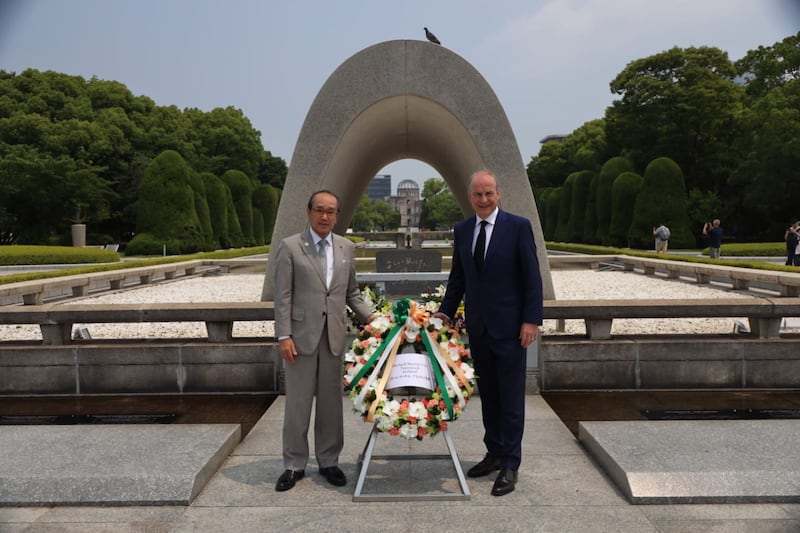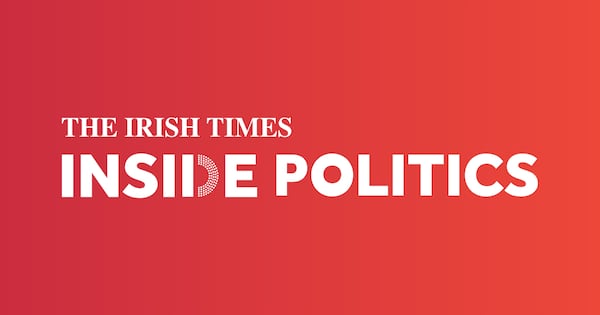Taoiseach Micheál Martin ended his four-day trip to Japan on Friday with a visit to Hiroshima, meeting a survivor of the atomic bomb attack by the US on the city 80 years ago. Mr Martin said that Teruko Yahata gave a very moving testimony of her experience as an eight-year-old when the bomb, which killed 140,000 people, fell and she and her family moved to the hills outside the city.
“She spoke about her friends who had died. She spoke about the burning, the shrapnel and gash in her mother’s back and so forth. When they were coming back down from the hills, there were rows of people coming back up with burns and skin peeling off their arms and so on. She gave a very comprehensive account and it was very moving to hear that,” he said.

Earlier, the Taoiseach laid a wreath at the cenotaph commemorating those who died in the attack and rang the peace bell nearby. Across the river he saw the Hiroshima Prefectural Industrial Promotional Hall, a domed building that was almost directly below the explosion and was damaged but not entirely destroyed, although everyone inside was killed.
At 8.15am on August 6th, 1945, the Enola Gay B29 bomber dropped the atomic bomb from about 9,450m and it detonated about 600m above the city. Few in Hiroshima heard anything as the bomb exploded but they saw a flash in the sky from a giant fireball reaching a heat of millions of degrees, vaporising those directly below.
RM Block
A shock wave moved outwards at supersonic speed, destroying or damaging 90 per cent of the buildings in the city and generating a firestorm that raged for hours. The heat from the fireball sucked air upwards, creating an 18-mile column of dust and debris from the collapsing buildings that flattened as it cooled at the higher altitude, forming the cap of the mushroom cloud.

How Japan fell in love with Irish culture
Seventy-thousand people died instantly, including most of the doctors and nurses in the city and a similar number died later from injuries or from the effects of radiation. Radiation sickness caused nausea, vomiting and uncontrollable diarrhoea immediately after the bombing and was later linked to cancer, organ damage, miscarriages and stillbirths.
Ireland’s former external affairs minister Frank Aiken moved the first resolutions at the United Nations that eventually led to the Nuclear Non-proliferation Treaty in 1968, and Irish diplomats played a key role in the review of that treaty in 2010. The Taoiseach said Ireland would continue to advocate for nuclear disarmament and non-proliferation at the United Nations.
“The worry at the moment is there is a drift from an international rules-based order,” he said. “Certainly, I think we’re at a crucial point in global affairs where like-minded countries have to group together to reassert first of all the primacy of the United Nations and its importance and the rule of law.
“At a very basic level, the world is advancing at an extraordinary rate. We’re now on the cusp of the AI revolution which could be as profound as the industrial revolution in the 19th century, people say. And yet mankind keeps on developing the means to destroy itself.
“At the AI summit in Paris, there was a presentation where one person spoke about the application of AI to warfare, which would really be on a different level altogether in terms of the destruction that could be wreaked on humankind. It is very problematic and I think very worrying in terms of where we are today.”*
*Article amended at 7am on July 5th, 2025










